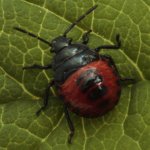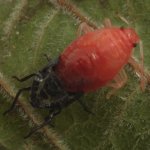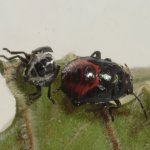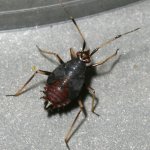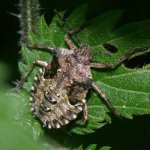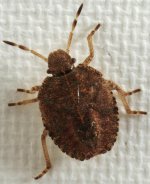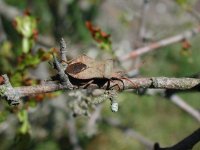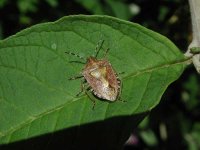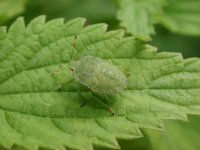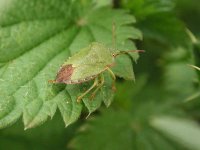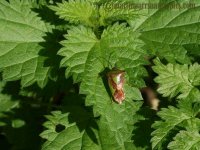Mis
Well-known member
Can anyone identify this shieldbug nymph I found in mid-July this year. It was in an area of bracken, brambles and nettles. I tried to keep it alive to adulthood but it died after moulting once. The best match I can find in Shieldbugs of Surrey is Troilus luridus but this one lacks the pale patches at the sides of the pronotum and round the edge of the abdomen. I did consider Eurydema dominulus but the pictures I found show two small red spots on the scutellum, if it's called that on a nymph.
The other photo is of what I believe to be a first instar nymph of the dock bug Coreus marginatus.
The other photo is of what I believe to be a first instar nymph of the dock bug Coreus marginatus.




